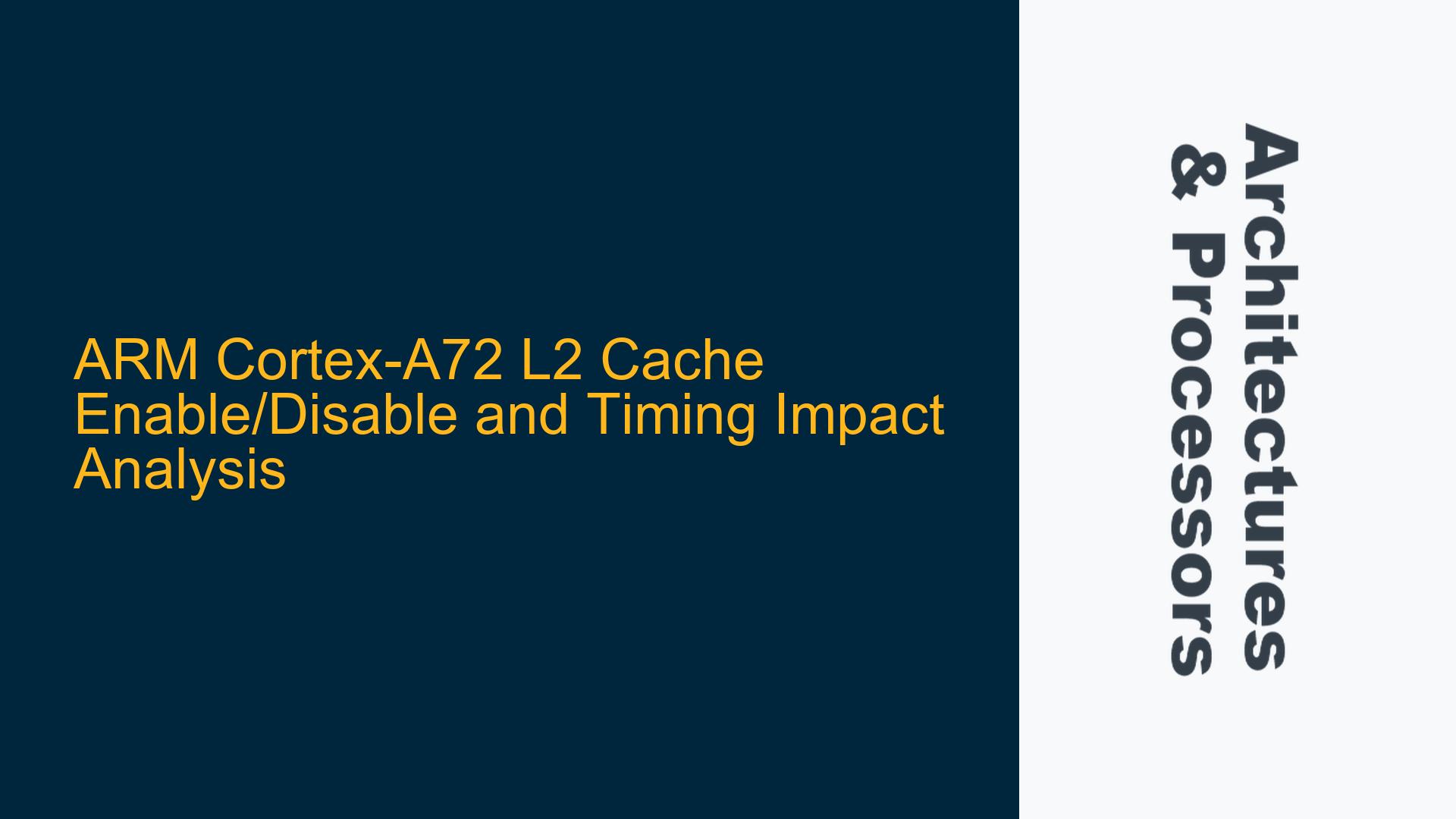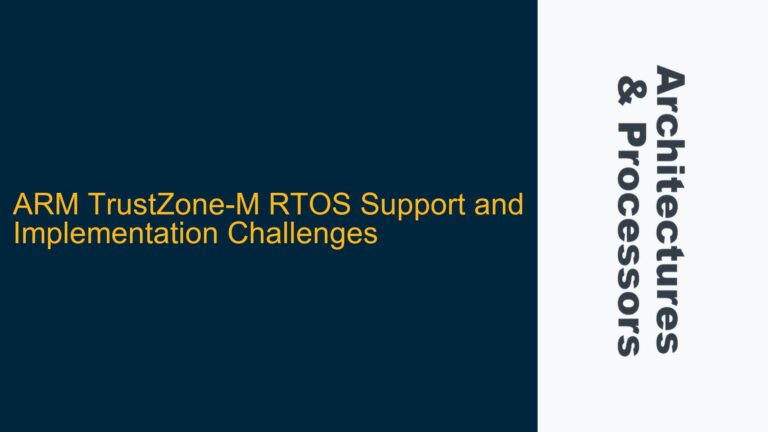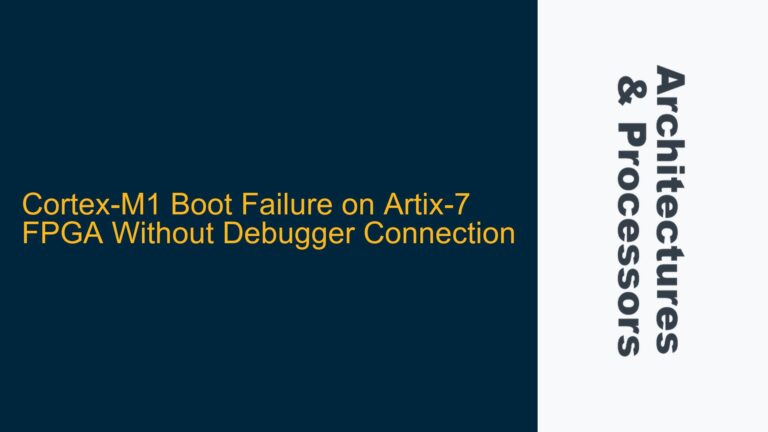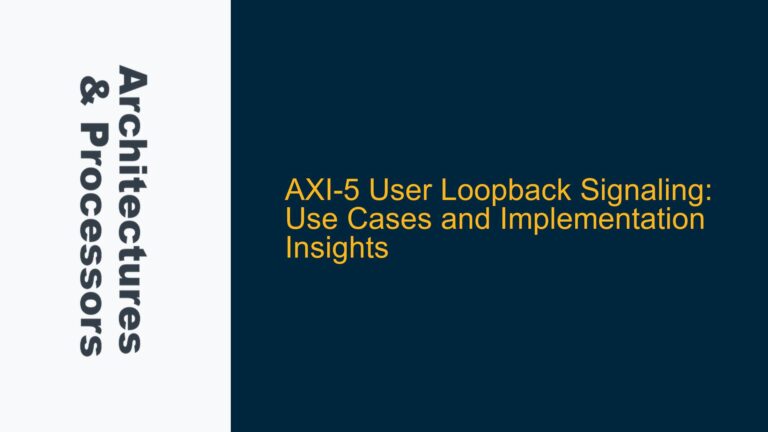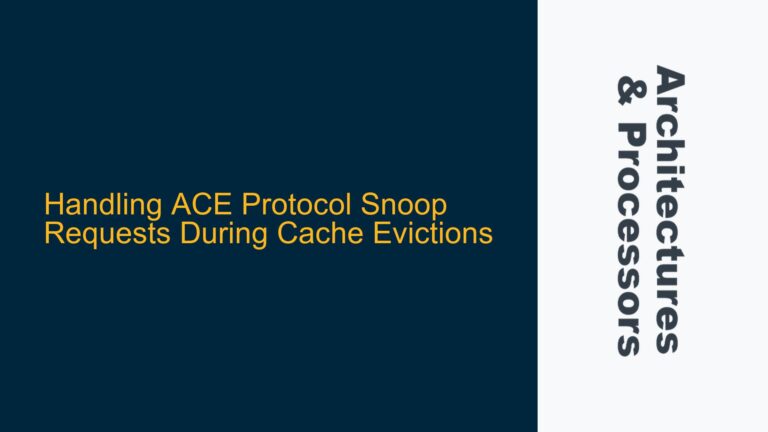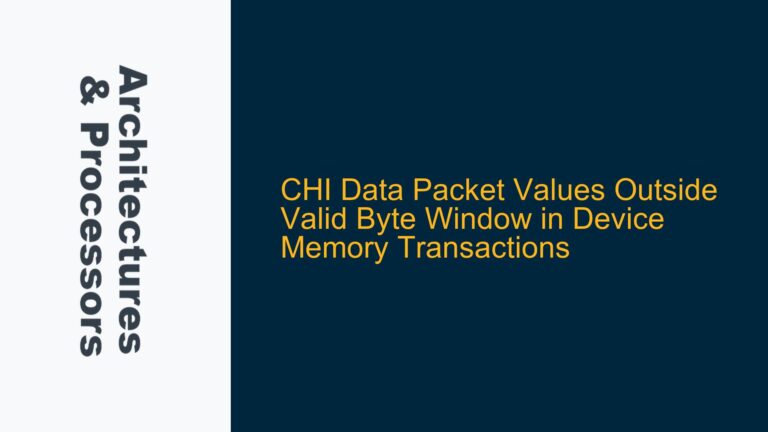ARM Cortex-A72 L2 Cache Disabling Procedure and Timing Observations
The ARM Cortex-A72 is a high-performance processor core designed for applications requiring significant computational power, such as mobile devices, networking equipment, and embedded systems. One of its key features is the inclusion of Level 1 (L1) and Level 2 (L2) caches, which are critical for reducing memory access latency and improving overall system performance. However, there are scenarios where disabling the L2 cache might be necessary, such as during low-power modes, debugging, or specific real-time operations. This post delves into the technical details of disabling the L2 cache on the ARM Cortex-A72, the implications of such actions, and the observed timing impacts.
The process of disabling the L2 cache on the ARM Cortex-A72 involves modifying specific system control registers, invalidating caches, and ensuring proper synchronization between the processor and memory subsystems. The primary register involved in this process is the System Control Register (SCTLR_EL1), which controls various system behaviors, including cache enable/disable functionality. Specifically, the C (Cache Enable) and I (Instruction Cache Enable) bits in the SCTLR_EL1 register must be set to 0 to disable both the data and instruction caches. Additionally, the L2 cache must be invalidated and flushed to ensure that no stale data remains in the cache after it is disabled.
However, disabling the L2 cache is not as straightforward as flipping a few bits in a register. The ARM Cortex-A72 architecture requires that the L1 and L2 caches be disabled together, as they are tightly coupled in their operation. This means that disabling the L2 cache also necessitates disabling the L1 cache, which can have significant performance implications. Furthermore, the Memory Management Unit (MMU) must be carefully managed during this process, as it relies on the caches for efficient address translation and memory access.
The timing impact of disabling the L2 cache is another critical aspect to consider. Caches are designed to reduce memory access latency by storing frequently accessed data closer to the processor. When the L2 cache is disabled, the processor must fetch data directly from main memory, which is significantly slower than accessing data from the cache. This results in a noticeable increase in access times, which can affect the overall performance of the system. The extent of this timing increase depends on various factors, including the memory subsystem’s speed, the workload’s characteristics, and the specific use case.
In summary, disabling the L2 cache on the ARM Cortex-A72 involves a series of carefully orchestrated steps, including modifying the SCTLR_EL1 register, invalidating caches, and managing the MMU. The timing impact of this action is significant, as it forces the processor to rely on slower main memory accesses, leading to increased latency and reduced performance. The following sections will explore the possible causes of these timing increases and provide detailed troubleshooting steps and solutions to mitigate their impact.
Cache Invalidation and MMU Configuration During L2 Cache Disabling
When disabling the L2 cache on the ARM Cortex-A72, one of the most critical steps is ensuring that the caches are properly invalidated and flushed before they are disabled. Cache invalidation is necessary to ensure that no stale data remains in the cache, which could lead to incorrect program behavior or data corruption. The process of invalidating the cache involves clearing the cache lines and ensuring that any modified data is written back to main memory. This is particularly important for the data cache (DCache), as it may contain dirty lines that have not yet been written back to memory.
The instruction cache (ICache) must also be invalidated to ensure that the processor fetches the correct instructions from memory after the cache is disabled. Failure to invalidate the ICache could result in the processor executing stale or incorrect instructions, leading to unpredictable behavior. The ARM Cortex-A72 provides specific instructions for invalidating the ICache and DCache, such as the IC IALLU (Invalidate All Instruction Caches to PoU) and DC CISW (Clean and Invalidate Data Cache by Set/Way) instructions. These instructions must be executed in the correct order to ensure that the caches are properly invalidated before they are disabled.
Another important consideration when disabling the L2 cache is the configuration of the Memory Management Unit (MMU). The MMU is responsible for translating virtual addresses to physical addresses and relies on the caches for efficient address translation. When the caches are disabled, the MMU must still function correctly to ensure that the processor can access memory. However, the absence of caches means that the MMU must perform address translation directly from main memory, which can introduce additional latency.
In some cases, it may be necessary to reconfigure the MMU to optimize its performance when the caches are disabled. For example, the MMU’s Translation Lookaside Buffer (TLB) can be used to cache address translations, reducing the need for frequent memory accesses. However, the TLB is much smaller than the L1 and L2 caches, so its effectiveness is limited. Additionally, the TLB must be invalidated and flushed when the caches are disabled to ensure that it does not contain stale translations.
The timing impact of disabling the L2 cache is directly related to the increased latency of memory accesses. Without the L2 cache, the processor must fetch data and instructions directly from main memory, which is significantly slower than accessing the cache. This results in a noticeable increase in access times, which can affect the overall performance of the system. The extent of this timing increase depends on various factors, including the memory subsystem’s speed, the workload’s characteristics, and the specific use case.
In summary, disabling the L2 cache on the ARM Cortex-A72 requires careful management of cache invalidation and MMU configuration. The caches must be properly invalidated and flushed to ensure that no stale data remains, and the MMU must be reconfigured to optimize its performance in the absence of caches. The timing impact of disabling the L2 cache is significant, as it forces the processor to rely on slower main memory accesses, leading to increased latency and reduced performance. The following section will provide detailed troubleshooting steps and solutions to mitigate the impact of disabling the L2 cache.
Implementing Data Synchronization Barriers and Cache Management Strategies
To mitigate the timing impact of disabling the L2 cache on the ARM Cortex-A72, it is essential to implement data synchronization barriers and effective cache management strategies. Data synchronization barriers are used to ensure that all memory accesses are completed in the correct order, preventing potential issues such as data corruption or incorrect program behavior. The ARM Cortex-A72 provides several types of data synchronization barriers, including the Data Memory Barrier (DMB), Data Synchronization Barrier (DSB), and Instruction Synchronization Barrier (ISB). These barriers must be used appropriately to ensure that the processor and memory subsystem are properly synchronized during the cache disabling process.
The Data Memory Barrier (DMB) ensures that all memory accesses before the barrier are completed before any memory accesses after the barrier. This is particularly important when disabling the caches, as it ensures that all cache operations are completed before the caches are disabled. The Data Synchronization Barrier (DSB) ensures that all instructions before the barrier are completed before any instructions after the barrier are executed. This is necessary to ensure that the processor does not attempt to access the cache after it has been disabled. The Instruction Synchronization Barrier (ISB) ensures that the processor’s instruction pipeline is flushed, preventing the execution of stale instructions.
In addition to data synchronization barriers, effective cache management strategies can help mitigate the timing impact of disabling the L2 cache. One such strategy is to minimize the number of cache misses by optimizing the memory access patterns of the workload. This can be achieved by reorganizing data structures to improve spatial and temporal locality, reducing the number of memory accesses required. Another strategy is to use prefetching techniques to bring data into the cache before it is needed, reducing the latency of memory accesses.
Another important consideration is the use of non-cacheable memory regions. When the L2 cache is disabled, certain memory regions can be marked as non-cacheable to prevent the processor from attempting to cache data. This can be particularly useful for memory-mapped I/O devices or other regions where caching is not desirable. The ARM Cortex-A72 provides mechanisms for marking memory regions as non-cacheable, such as the Memory Attribute Indirection Register (MAIR_EL1) and the Translation Table Descriptor fields. These mechanisms must be used carefully to ensure that the correct memory regions are marked as non-cacheable.
Finally, it is important to consider the impact of disabling the L2 cache on the overall system performance. In some cases, it may be necessary to disable the L2 cache temporarily for specific operations, such as debugging or low-power modes. In these cases, it is important to re-enable the L2 cache as soon as possible to restore normal system performance. The process of re-enabling the L2 cache involves setting the C and I bits in the SCTLR_EL1 register to 1, invalidating the caches, and reconfiguring the MMU. This must be done carefully to ensure that the caches are properly initialized and that the MMU is configured correctly.
In summary, implementing data synchronization barriers and effective cache management strategies can help mitigate the timing impact of disabling the L2 cache on the ARM Cortex-A72. Data synchronization barriers ensure that the processor and memory subsystem are properly synchronized, while cache management strategies optimize memory access patterns and reduce the number of cache misses. Additionally, the use of non-cacheable memory regions and careful re-enabling of the L2 cache can help restore normal system performance. By following these steps, it is possible to minimize the performance impact of disabling the L2 cache and ensure that the system continues to operate efficiently.
